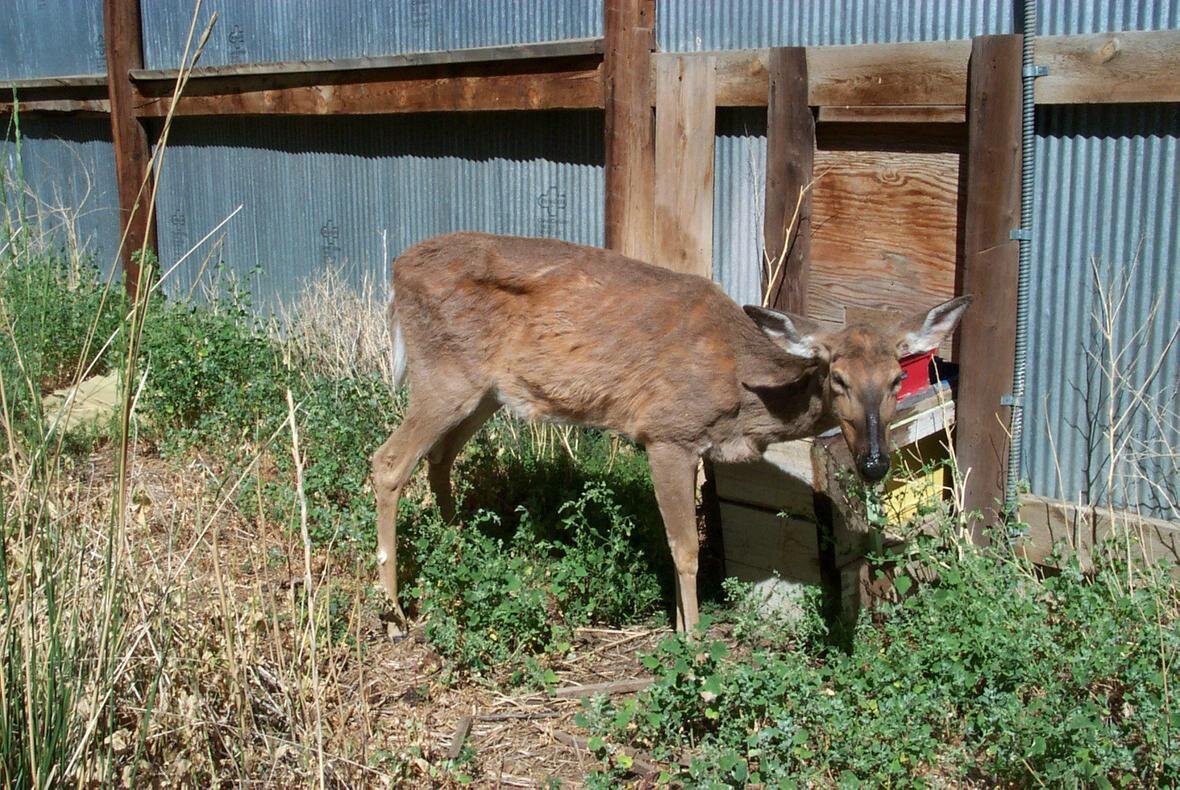PICTURED: Two men in Htamanthi Wildlife Sanctuary move their livestock across tiger habitat.
Across the EU and US citizens are unhappy with their government’s response to COVID-19. According to surveys from Statista, positive responses to the question of whether an American was satisfied with their government’s actions during COVID-19 were about 30%, while only of 34% of Europeans agreed that the EU had done a good job handling the pandemic.
This might relate to quarantine or lockdown procedures, social distancing edicts or distribution of medical supplies, but it seems unlikely any of the respondents would remark that their leaders had done a poor job vaccinating livestock, funding disease management in wild ungulate populations, or encouraging hunting.
In a policy report for the International Union for the Conservation of Nature (IUCN), the world’s largest body of conservationists posits that using wildlife disease management strategies can help prevent viral outbreaks like COVID-19 in the future.
“Every day, humans get closer to animals due the pressures we put on the environment: habitat loss, wildlife trade, and the hunting and consumption of wild animals are still highly unregulated, and thus continually open pathways for animal-human transmissions,” writes the IUCN.
“This unsustainable contact and wildlife destruction has led to ‘ecosystem disruptions [that have altered] infectious disease transmission patterns’, according to Dr. Bernadette Abela-Ridder from the World Health Organization.”
PICTURED: A whitetail deer with visible signs of Chronic Wasting Disease. Photo credit: Terry Kreeger, Wyoming Game and Fish and Chronic Wasting Disease Alliance.
Human contact with wildlife contagions
Ridder went on to explain, according to the IUCN that, “75% of emerging infectious diseases in people are of zoonotic origin”, adding that “animals including wildlife harbour microorganisms that may not yet have been identified. Some are able to jump the species barrier given the right conditions”.
Indeed many viruses arise from contact between humans and animals – the most recent and SARS-Cov-2-excluded example would be Ebola, which as reported by the Center for International Forestry Research was transmitted to humans from bats. The genesis of the interaction lay in deforestation and the subsequent increased contact between bats and humans.
Statesite, and far from the dark recesses of the Congolese rainforest, chronic wasting disease, or CWD, is about as alarming an epidemic as one could imagine that has so far not shown evidence of its communicability to humans.
As is so often the case with conservation, that which can help one species can often help another, and many of the projects employed since the outbreak of COVID-19 by the IUCN have been from the desks of the Integrated Tiger Habitat Conservation Program.
How tigers and COVID go together
As human populations have grown across tiger range-countries of India, Sumatra, and Southeast Asia, so have the populations of livestock which humans rely on for economic and nutritional security. Livestock like cattle are often preyed upon by tigers.
The natural world is full of webs of life, one of which in India is a web that links humans with their livestock, livestock with their more wild counterparts of similar genetic makeup, and these wild counterparts with their predators – in this case tigers.
This has created a demand for a paradigm of veterinary and biology workers that can monitor the health of domestic and wild animals in a single ecosystem, a demand which has seen the Indian National Tiger Conservation Authority in 2019 ask all states to appoint a wildlife veterinarian in all Tiger Reserves of India.
Plans for conserving or managing wildlife often fail to pay attention to health aspects because the impact of infectious and non-infectious diseases on wildlife populations are far more difficult to observe than human-wildlife conflict, habitat encroachment or poaching which are much more obvious causes of wildlife decline.
This lack of observation however hasn’t stopped canine distemper from emerging in big cat species like African lions, critically endangered Amur tigers, and recently in Asiatic lions in Gir, India. Big cats are also threatened by other infections by blood protozoans (like trypanosomes and babesias), feline enteritis or panleukopenia, calicivirus and rhinotracheitis.
Vaccinating Livestock in Myanmar
In another IUCN Tiger Programme project, veterinarians and the local government are developing a similar livestock vaccination program that will benefit tigers in Myanmar, in order to prevent seasonal livestock disease outbreaks from infecting tiger prey species such as pigs and deers.
32 communities exist in the Htamanthi Wildlife Sanctuary in northwestern Myanmar which is also a tiger conservation area. Around 3,000 livestock animals face annual and seasonal outbreaks.
Moving domesticated animals back and forth across the conservation area presents serious threats to tiger conservation because domestic diseases could infect ungulate species such as wild pig, barking deer, sambar deer and gaur, which are the tigers’ main prey.
Implementing a vaccination program against diseases like Blackleg Disease, Foot-and-mouth Disease, and Haemorrhagic Septicaemia, is therefore like shooting two birds with one stone: the program will protect community property while saving wildlife from infection.
Continue exploring this topic — Banning the Wildlife Trade Could be Good News for Certain Animals, and a Death Sentence for Millions of Humans





